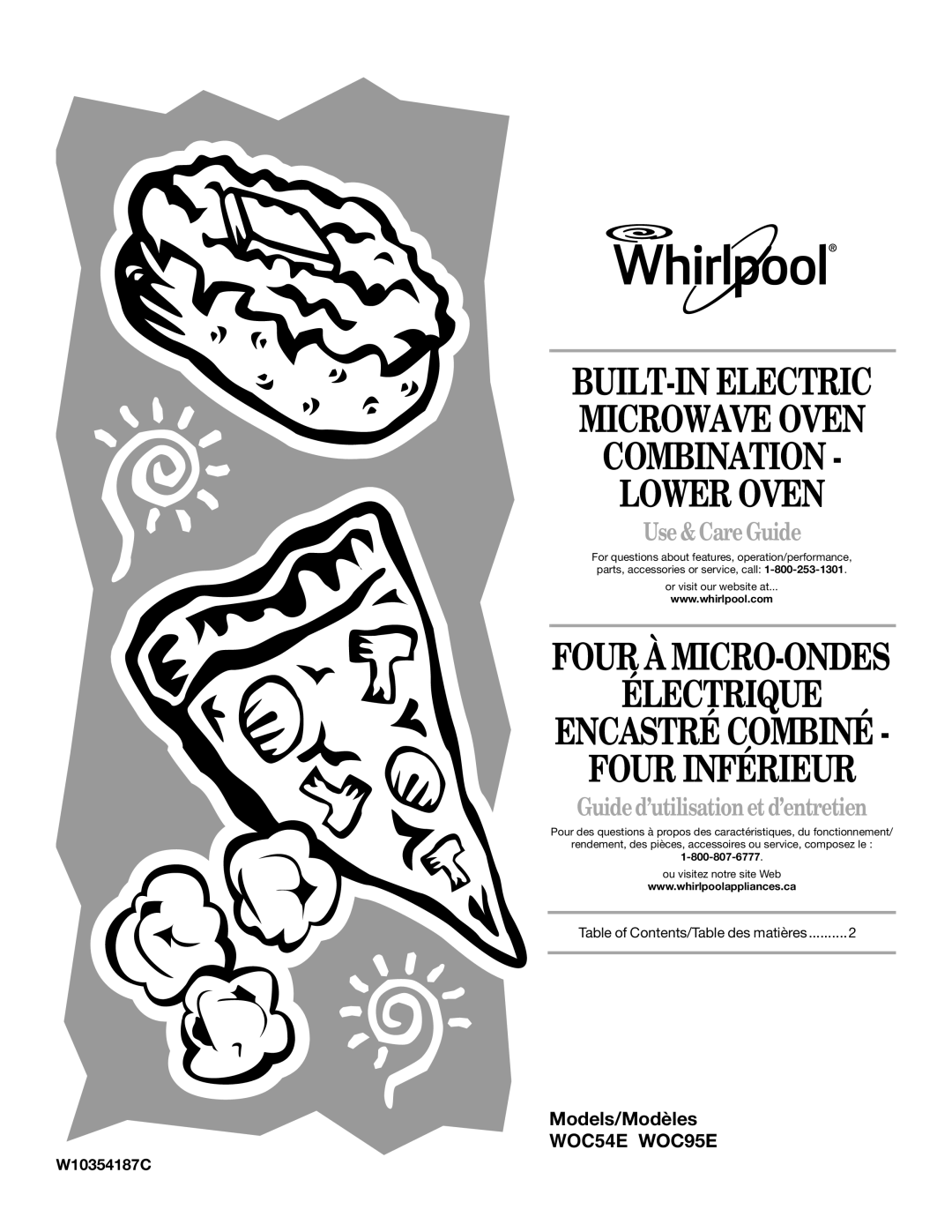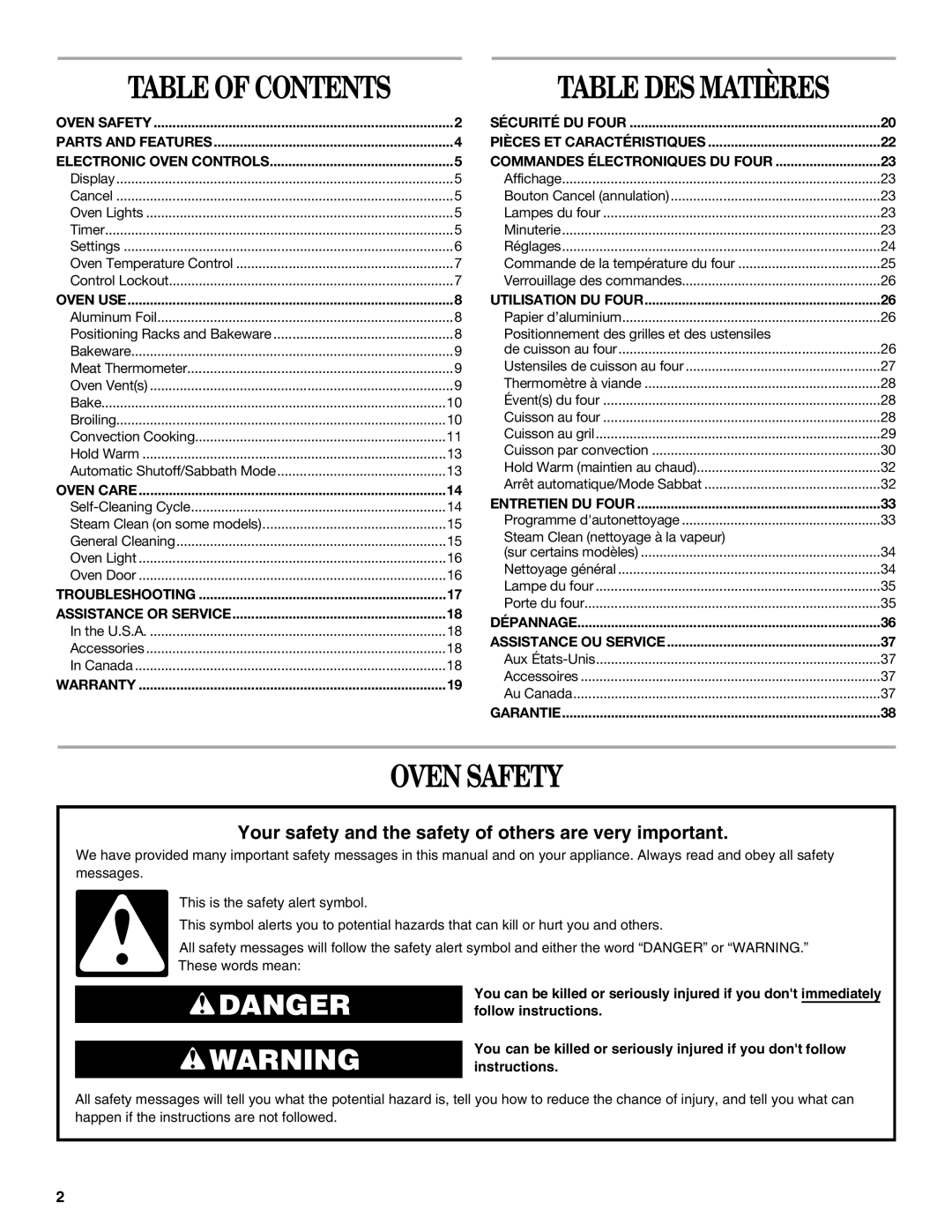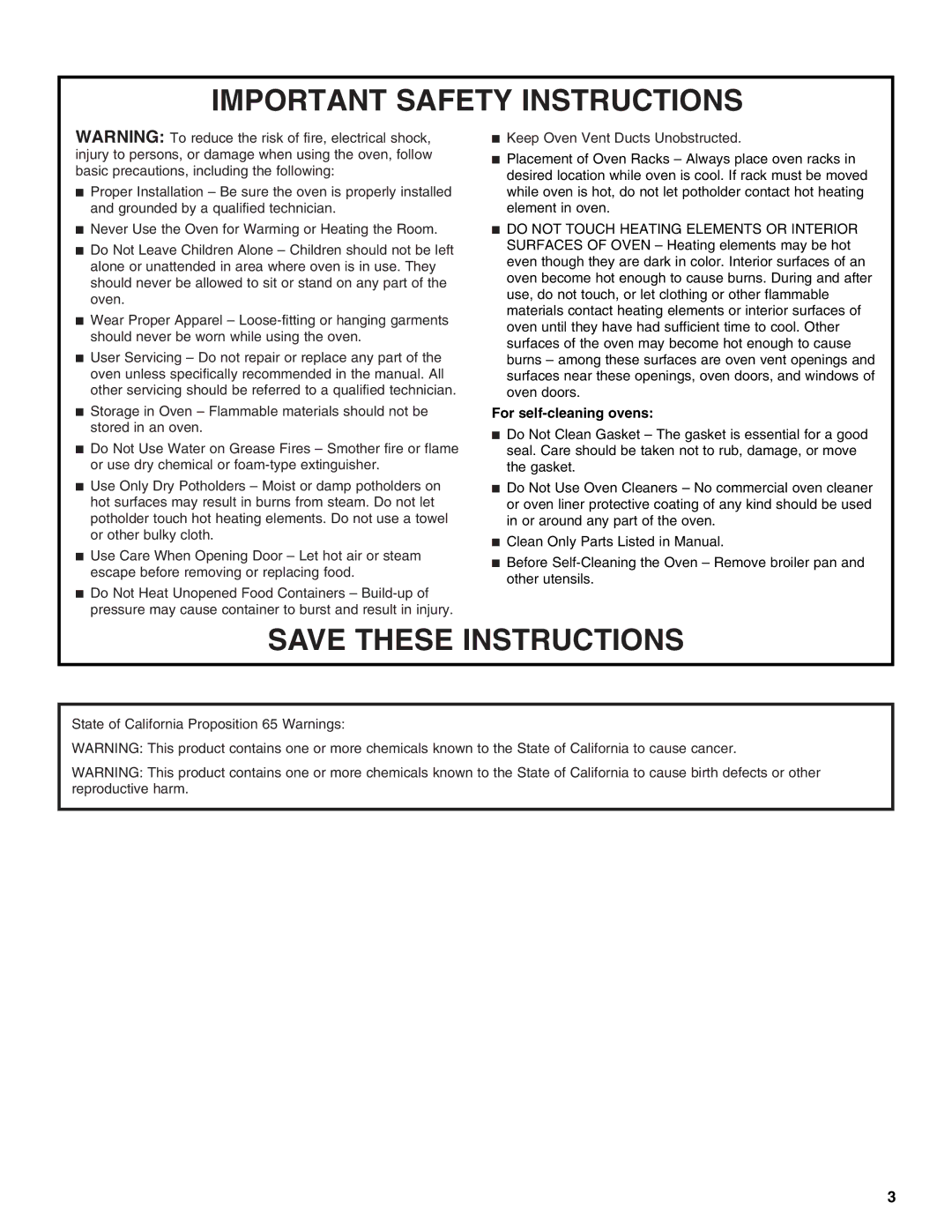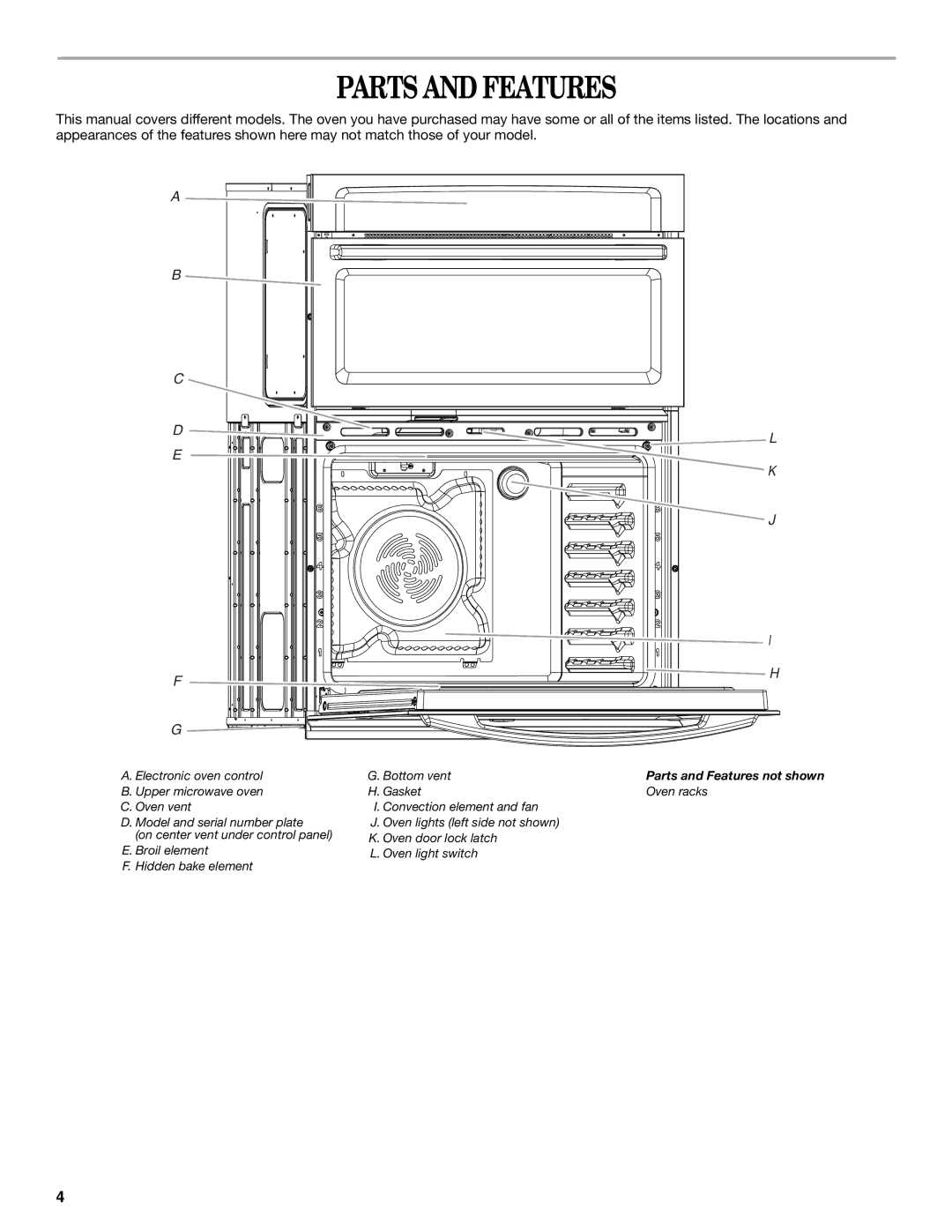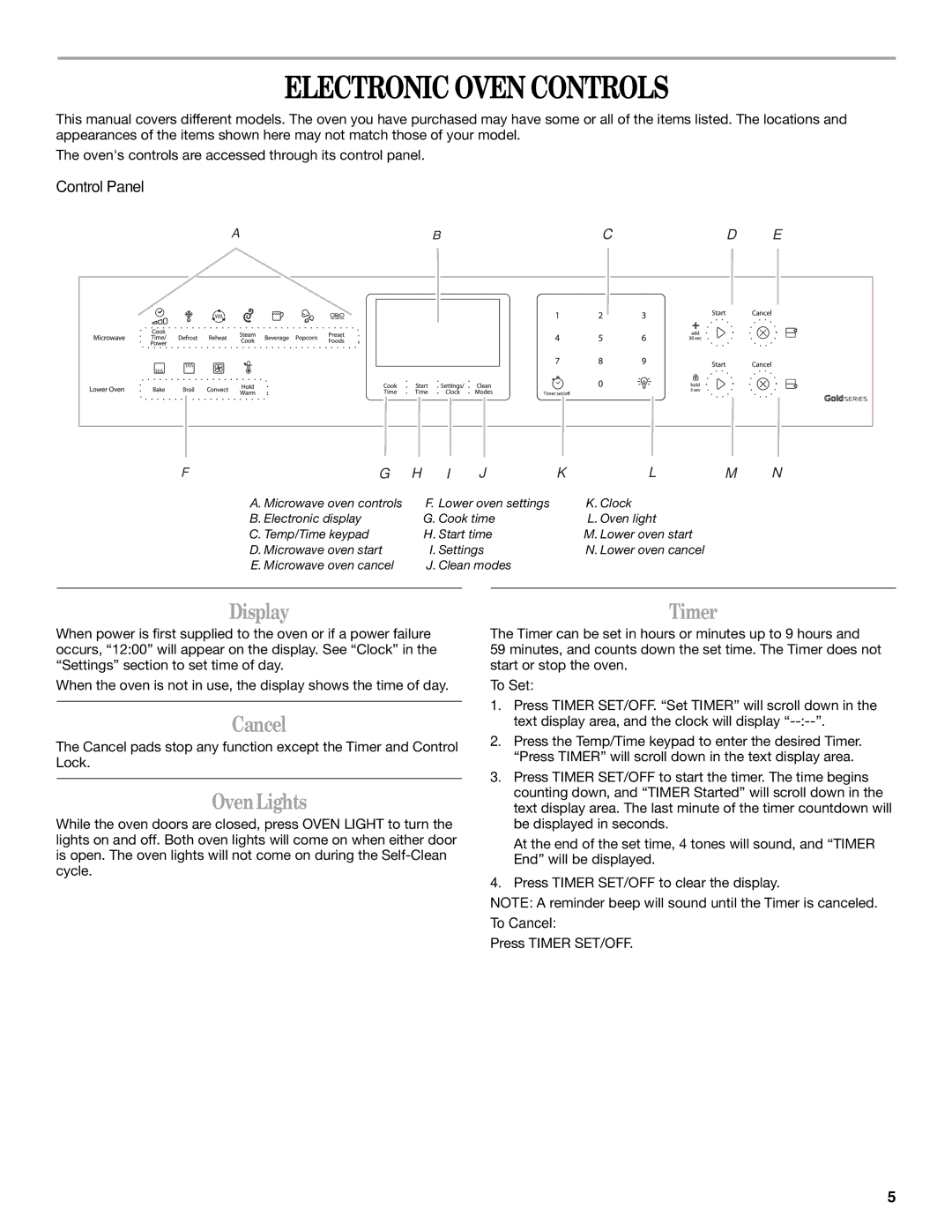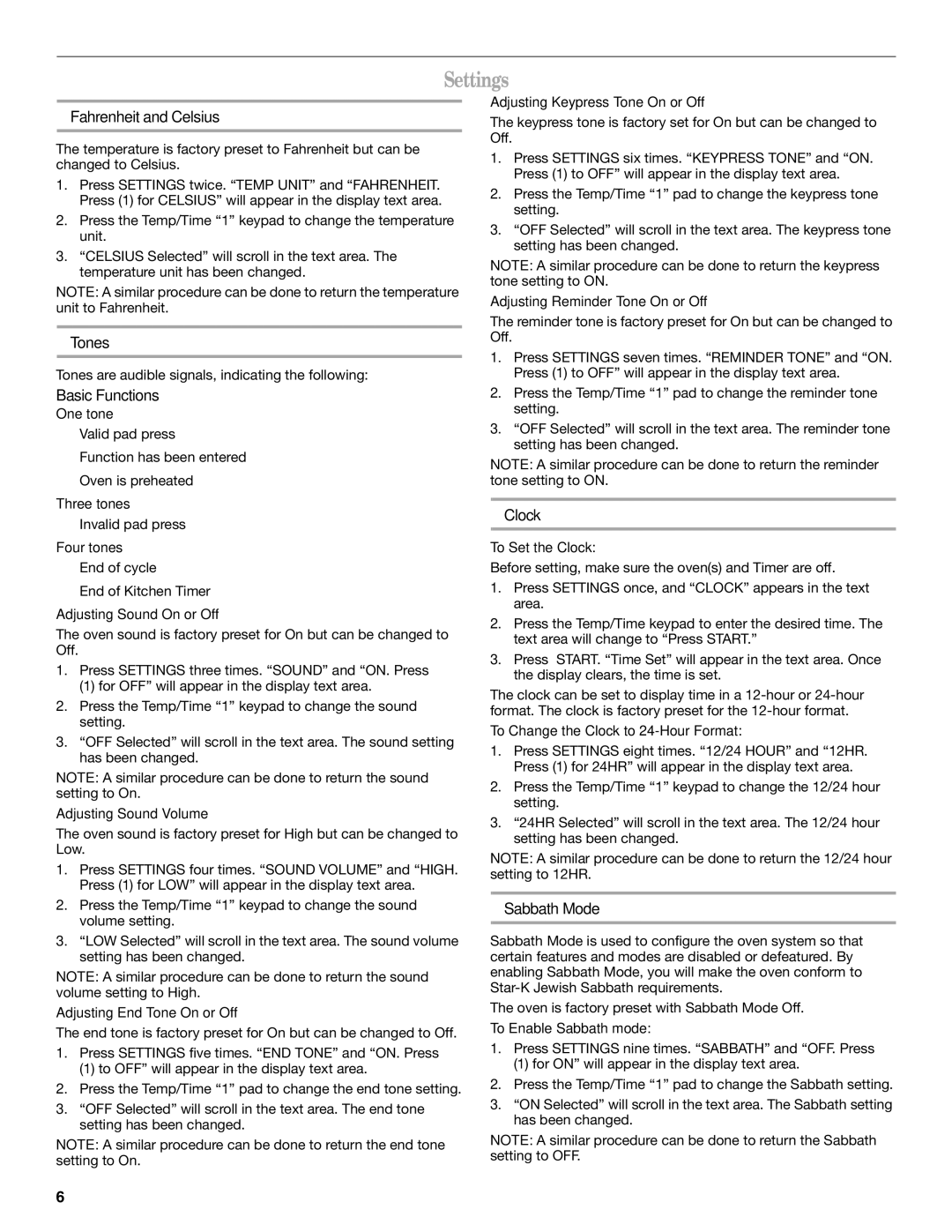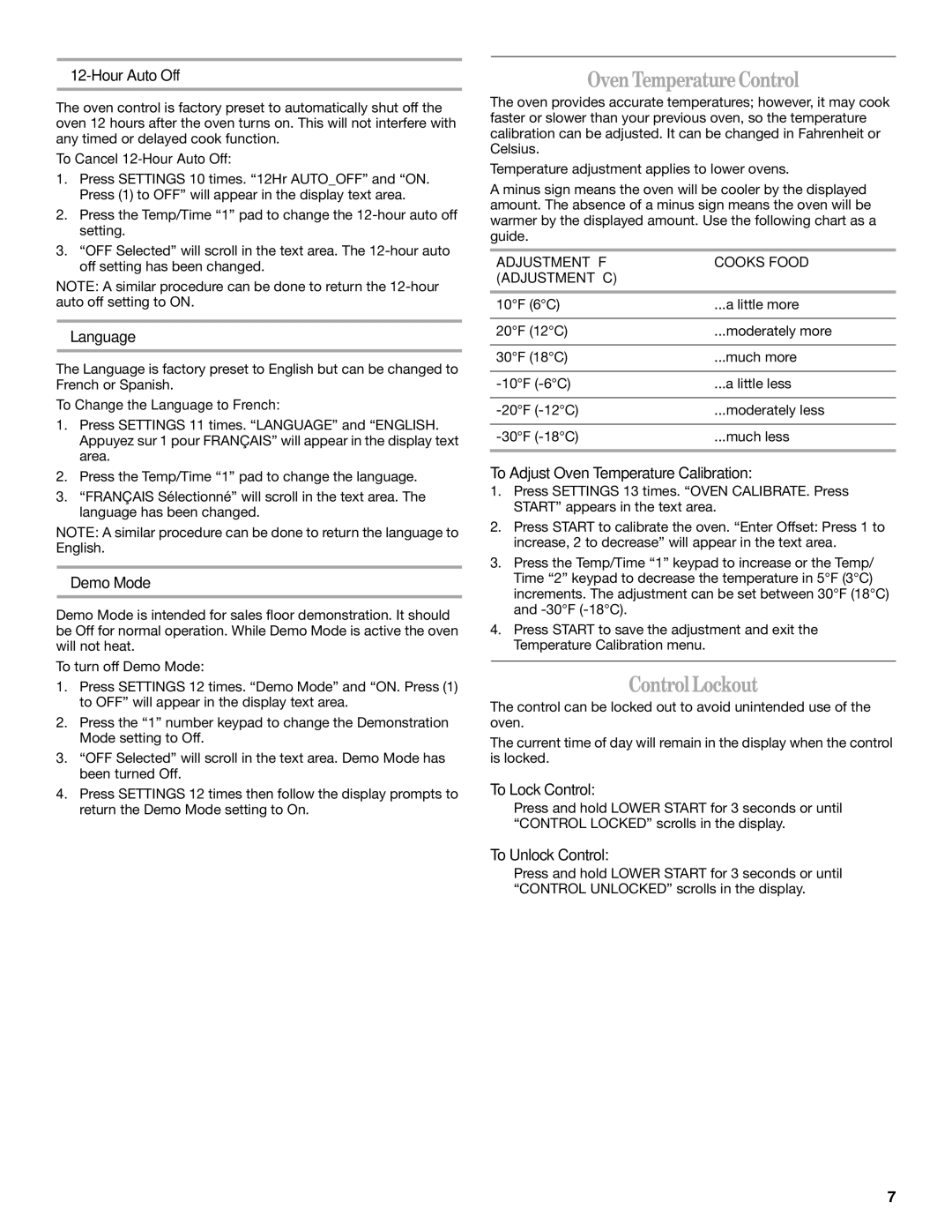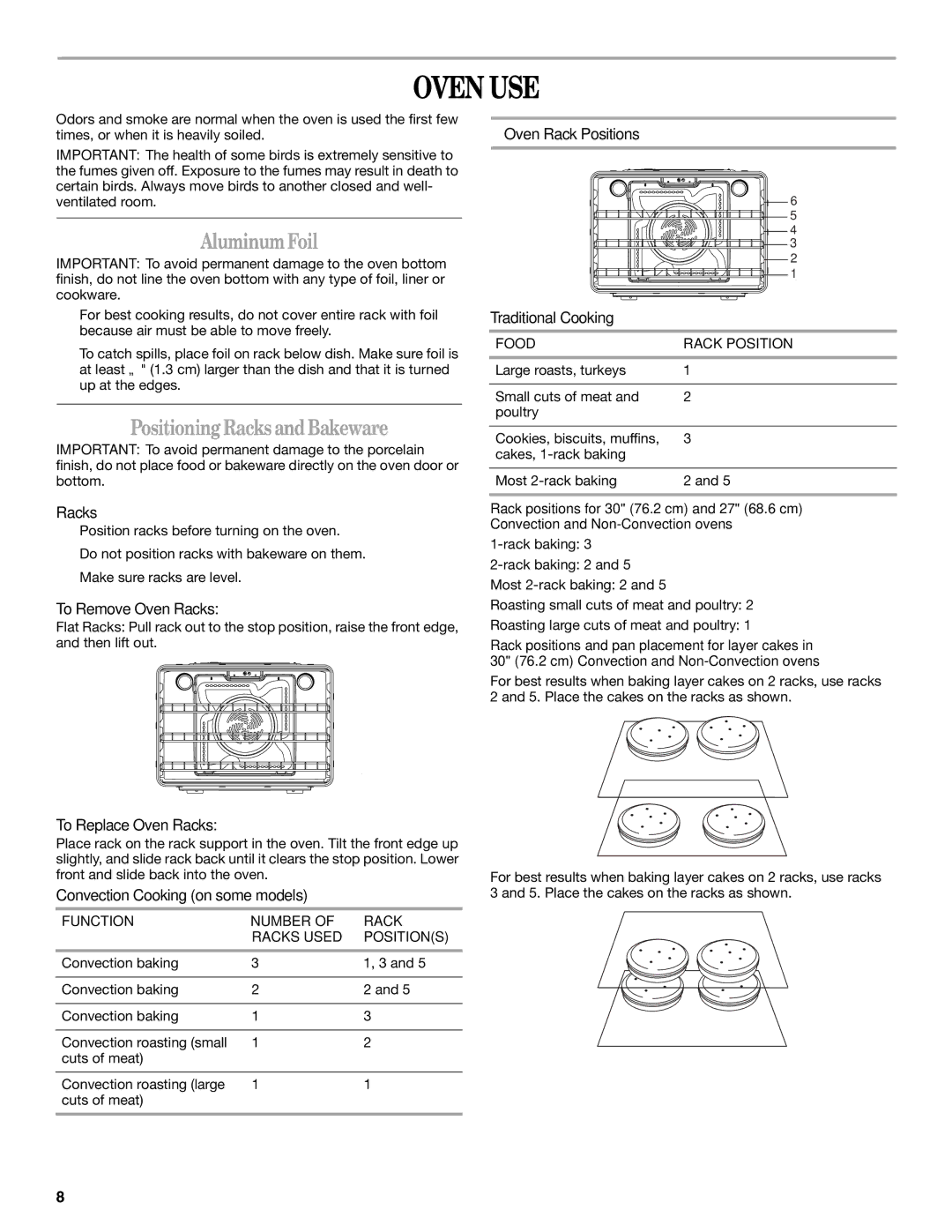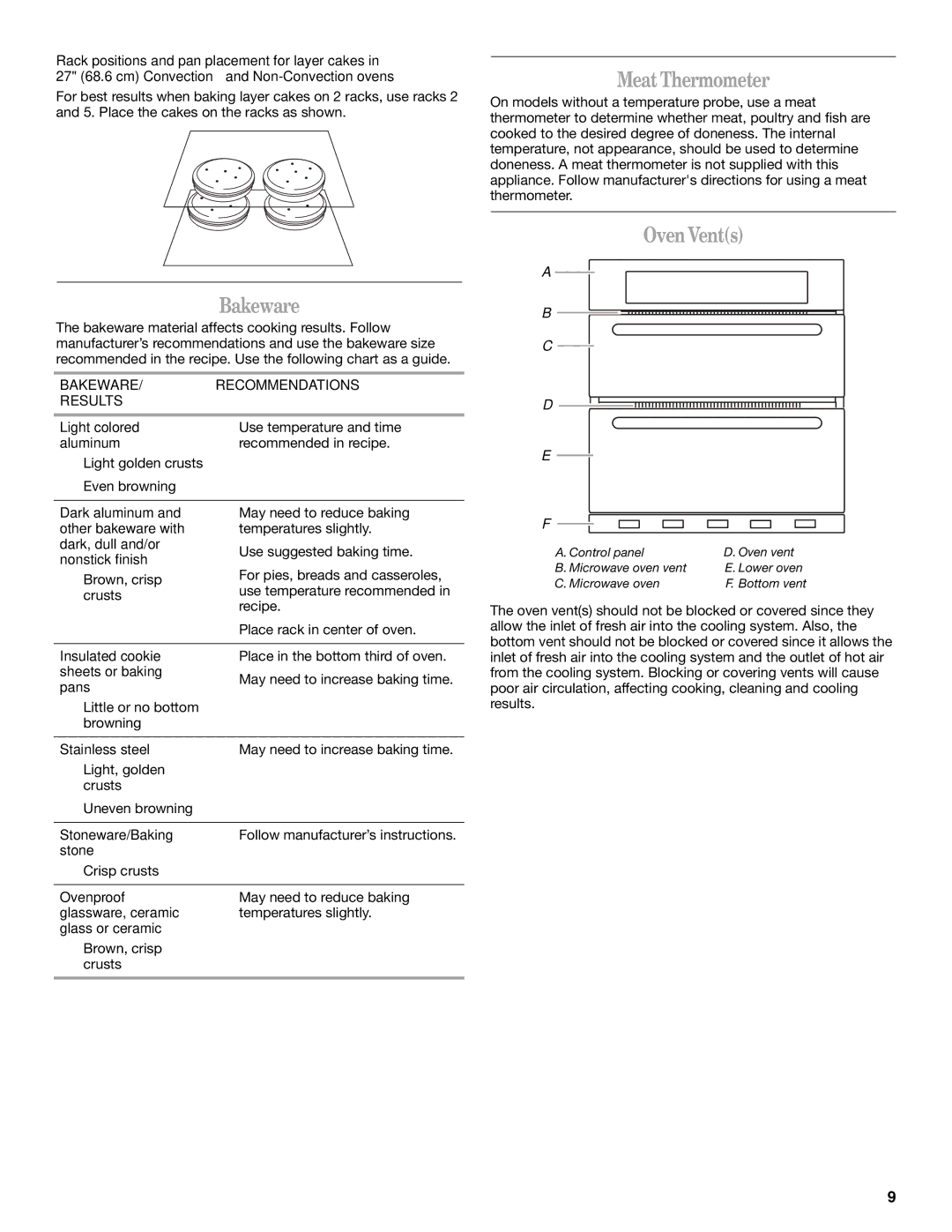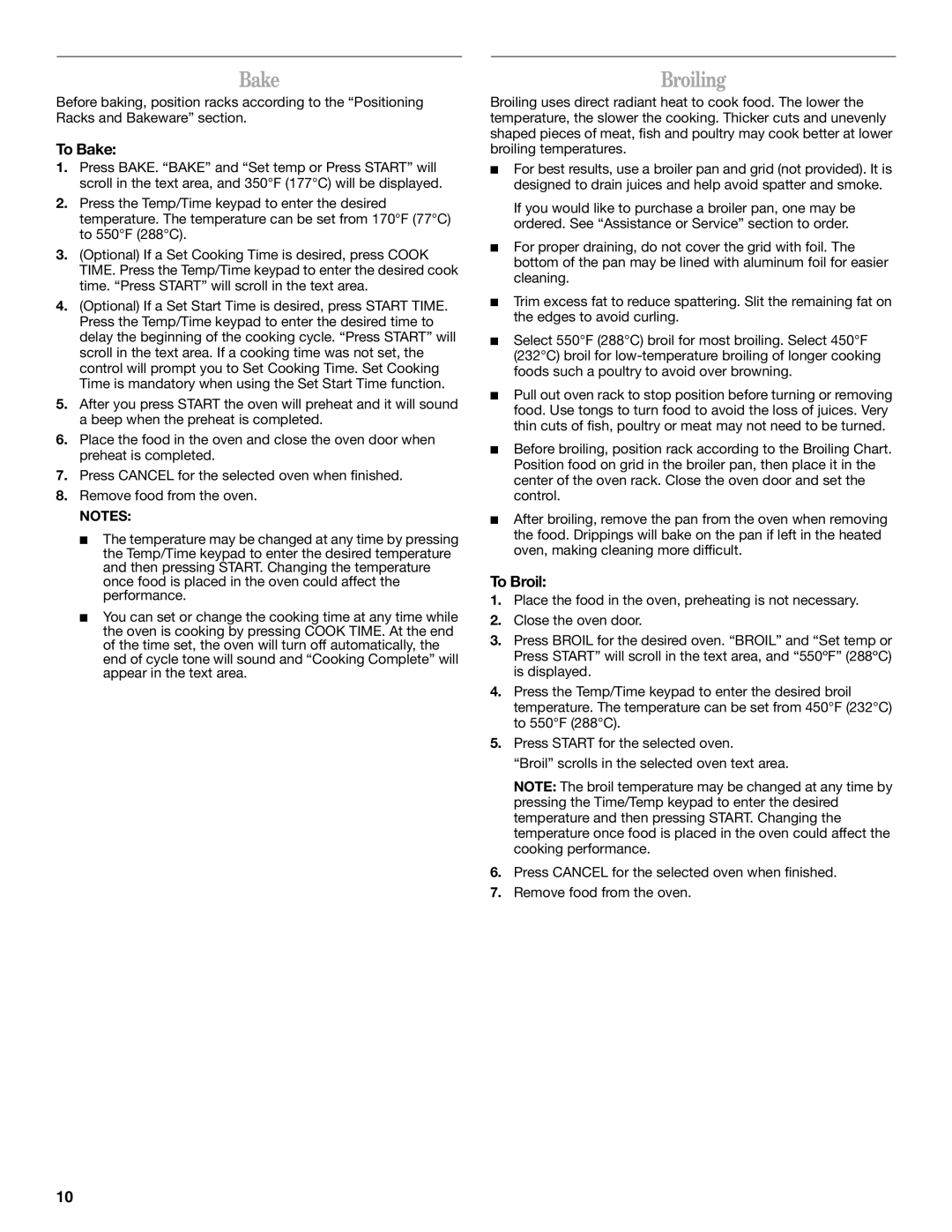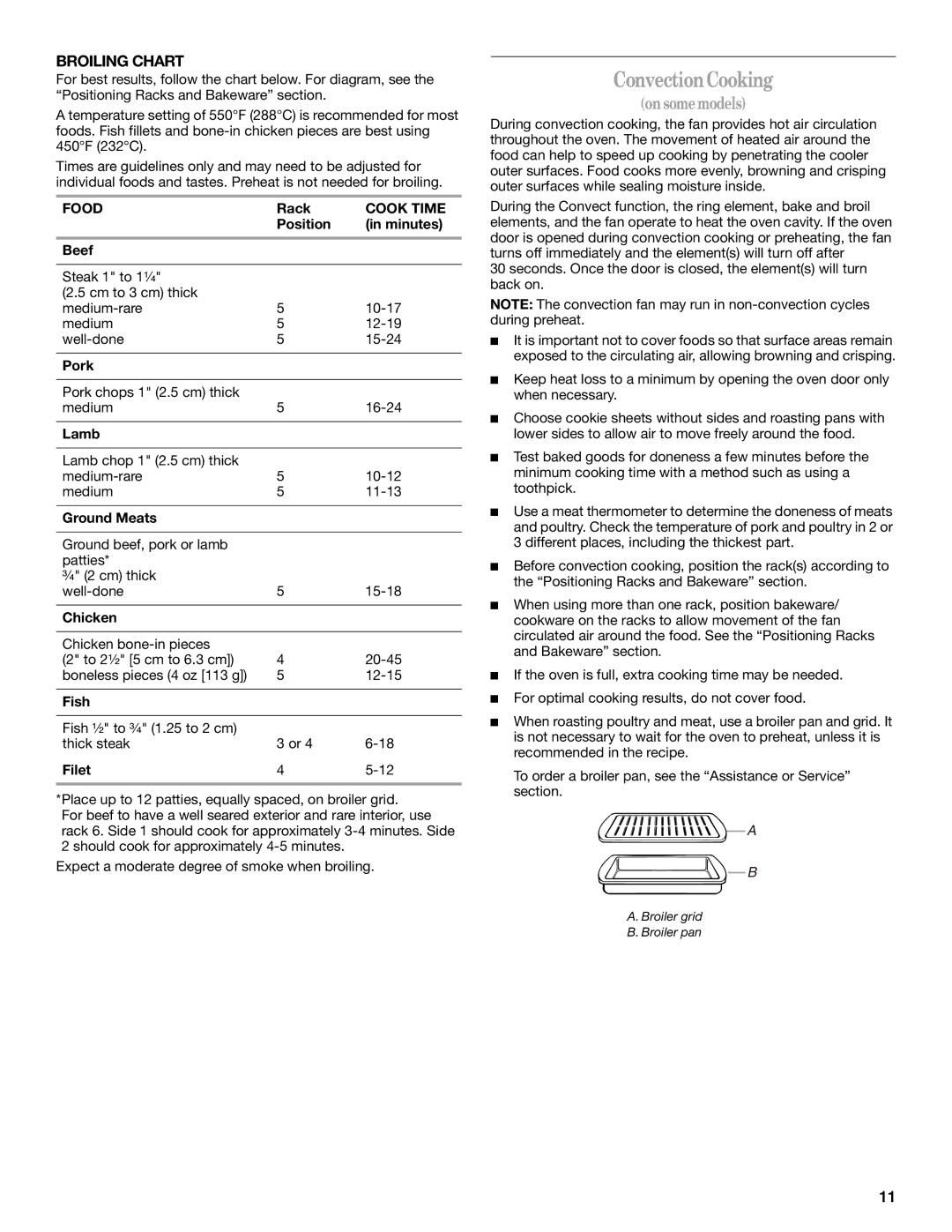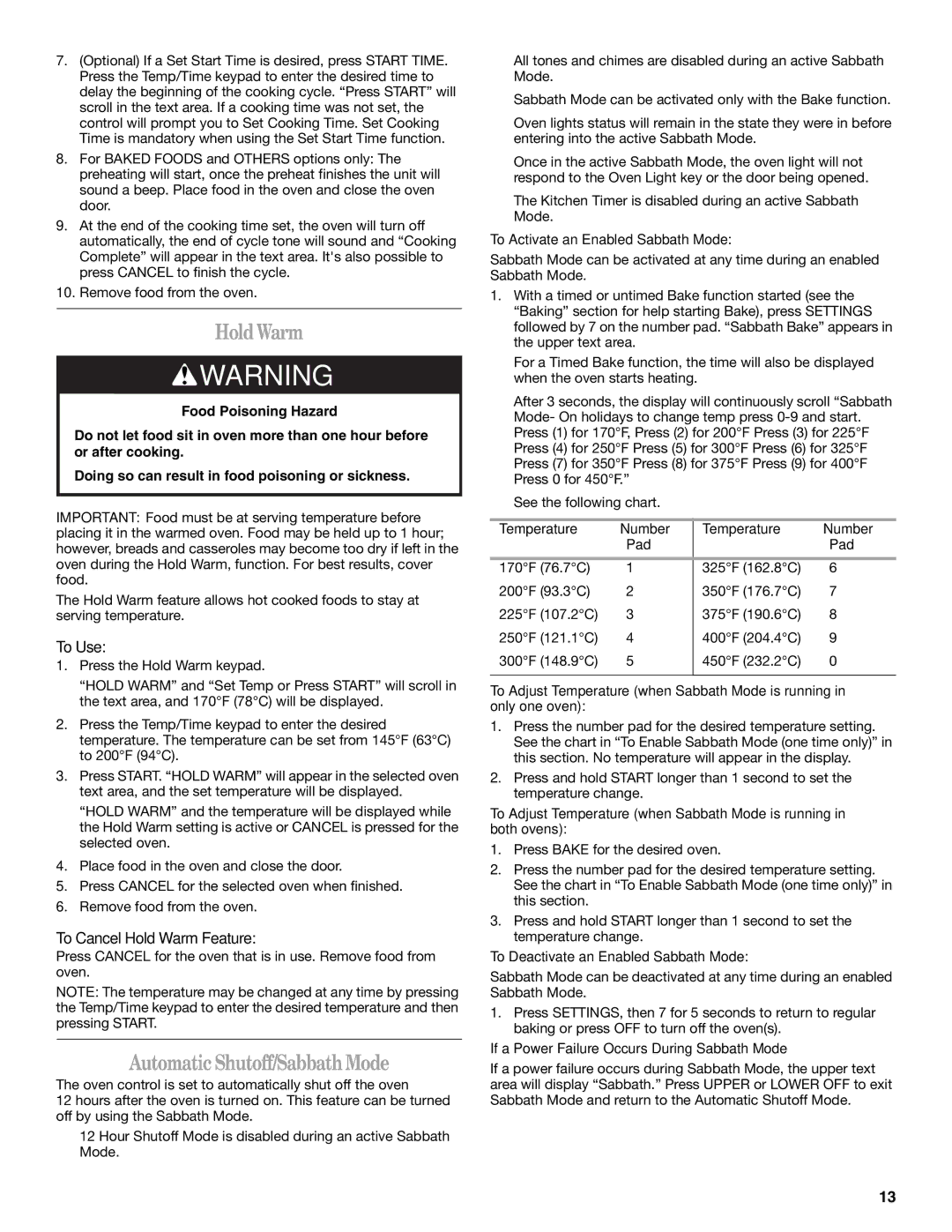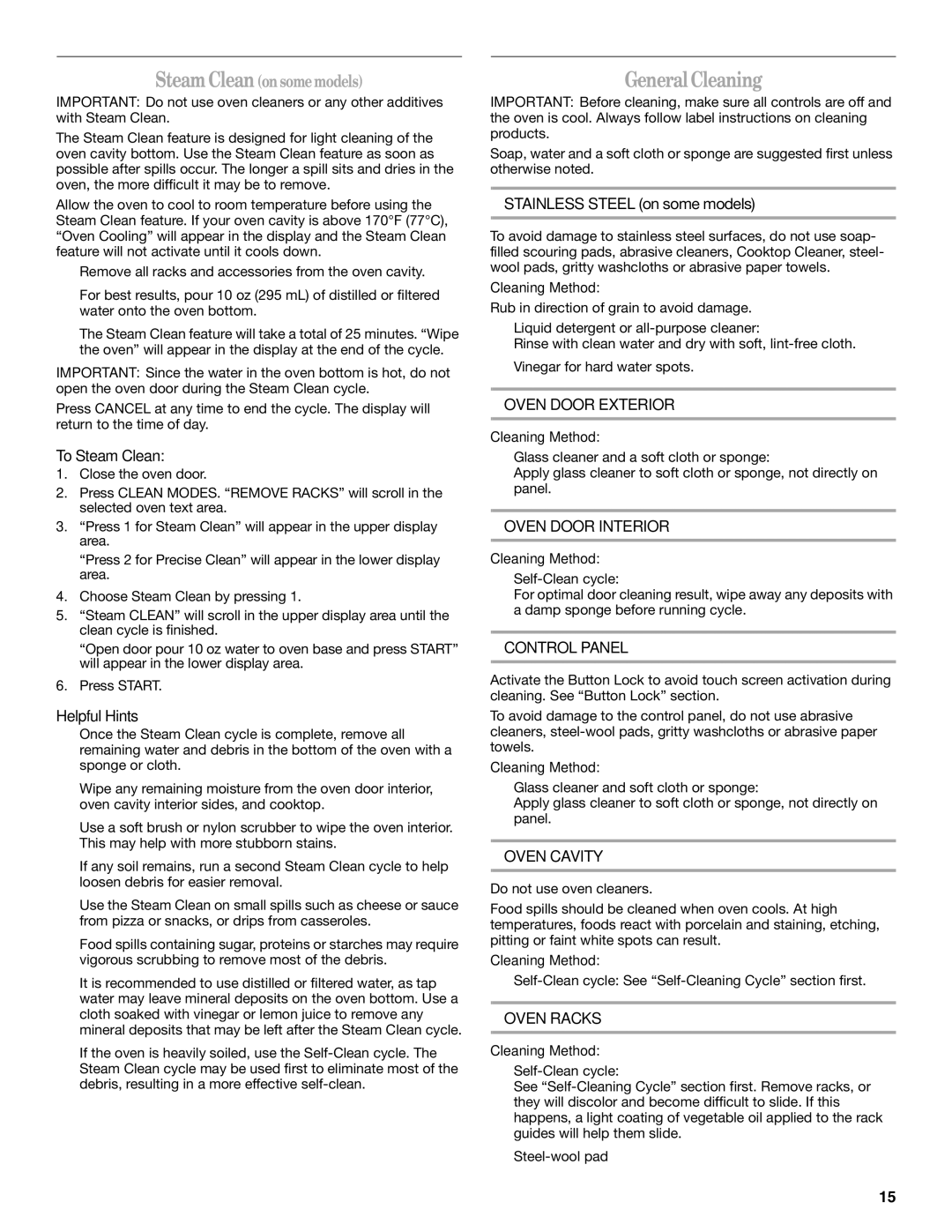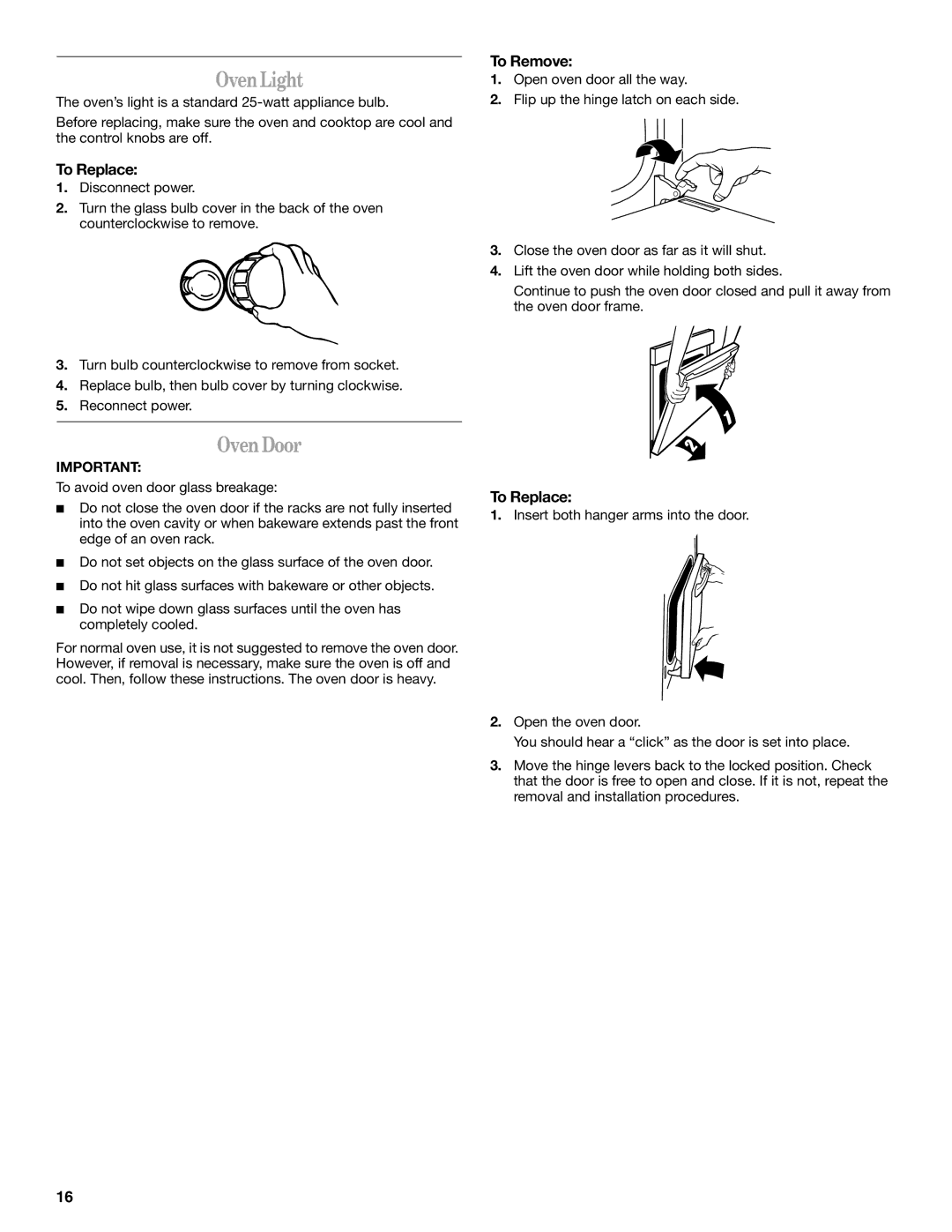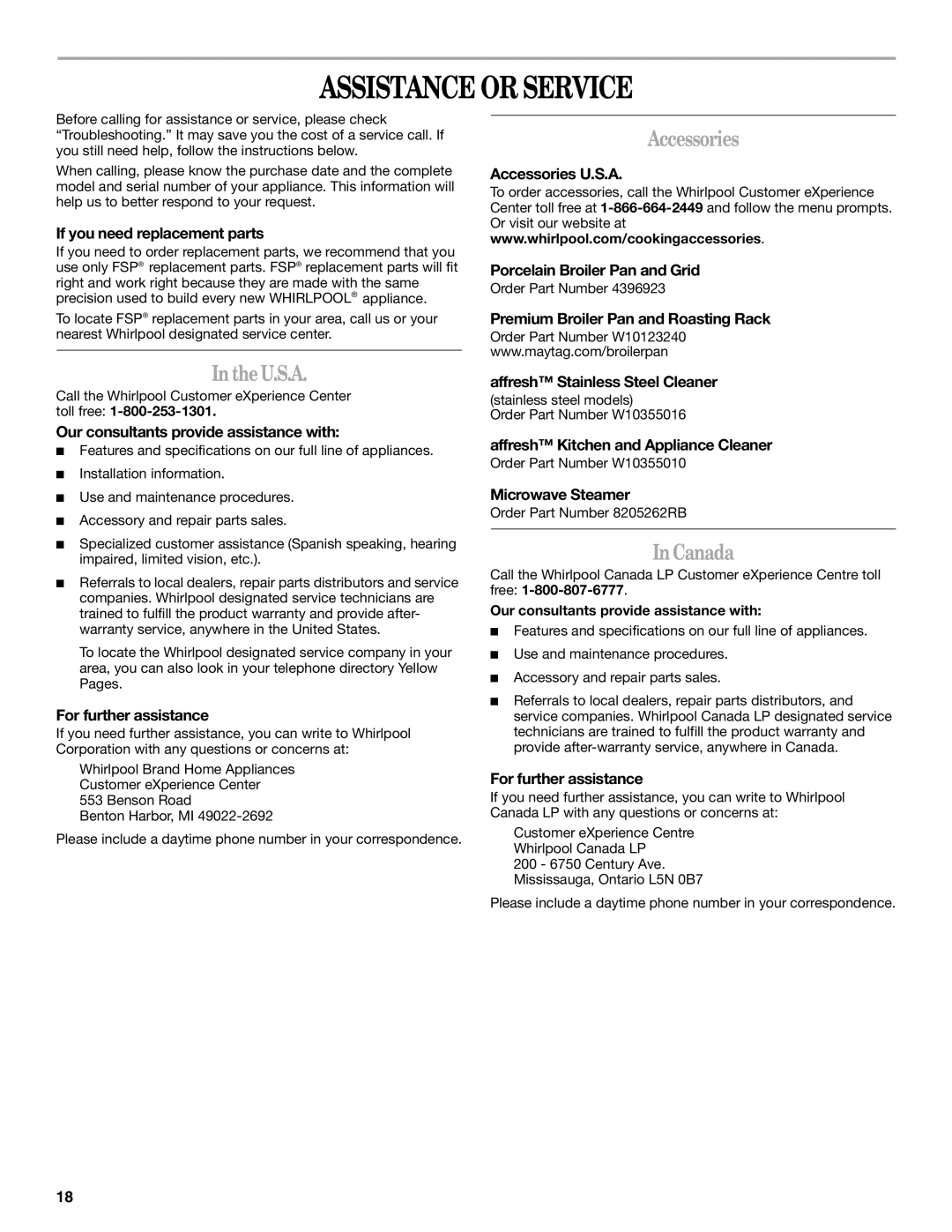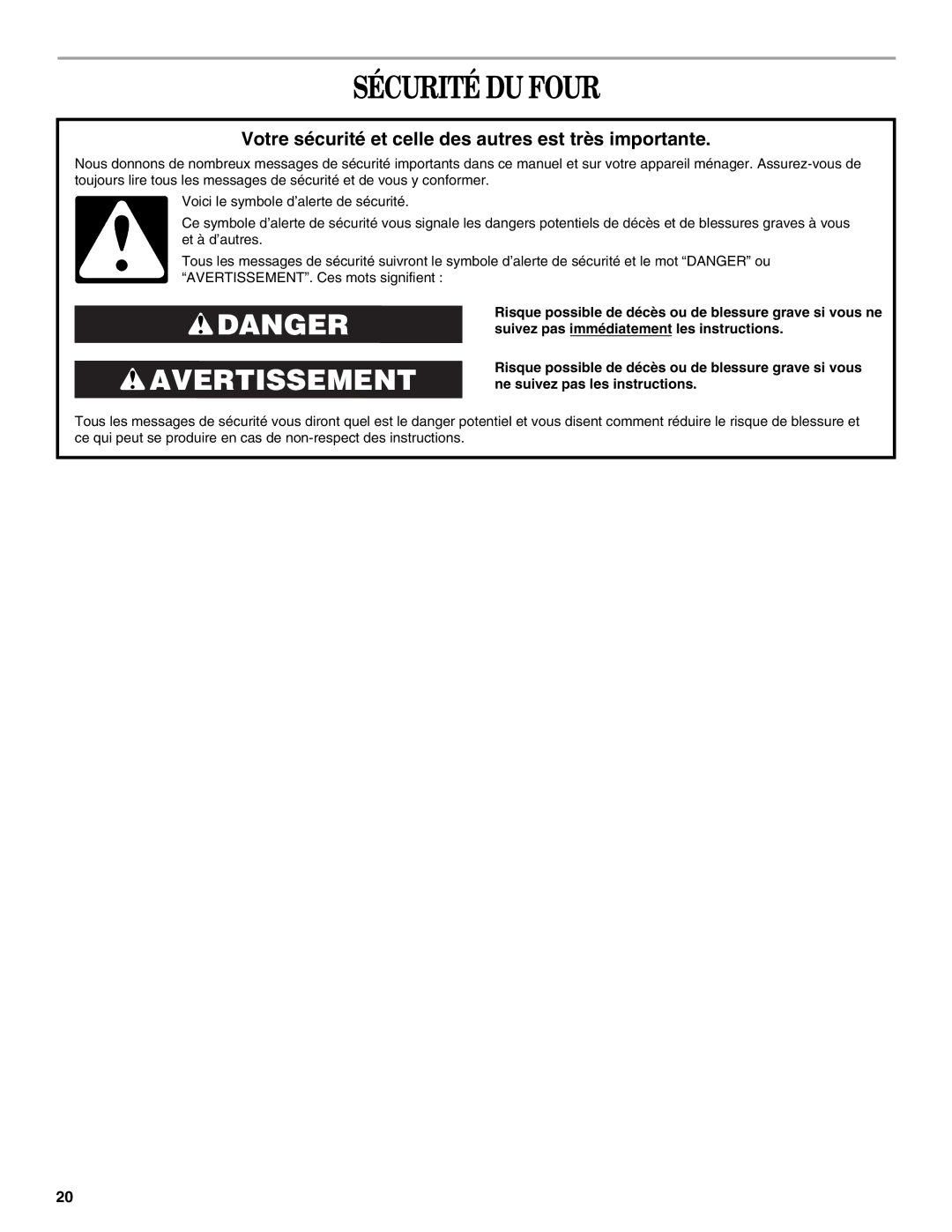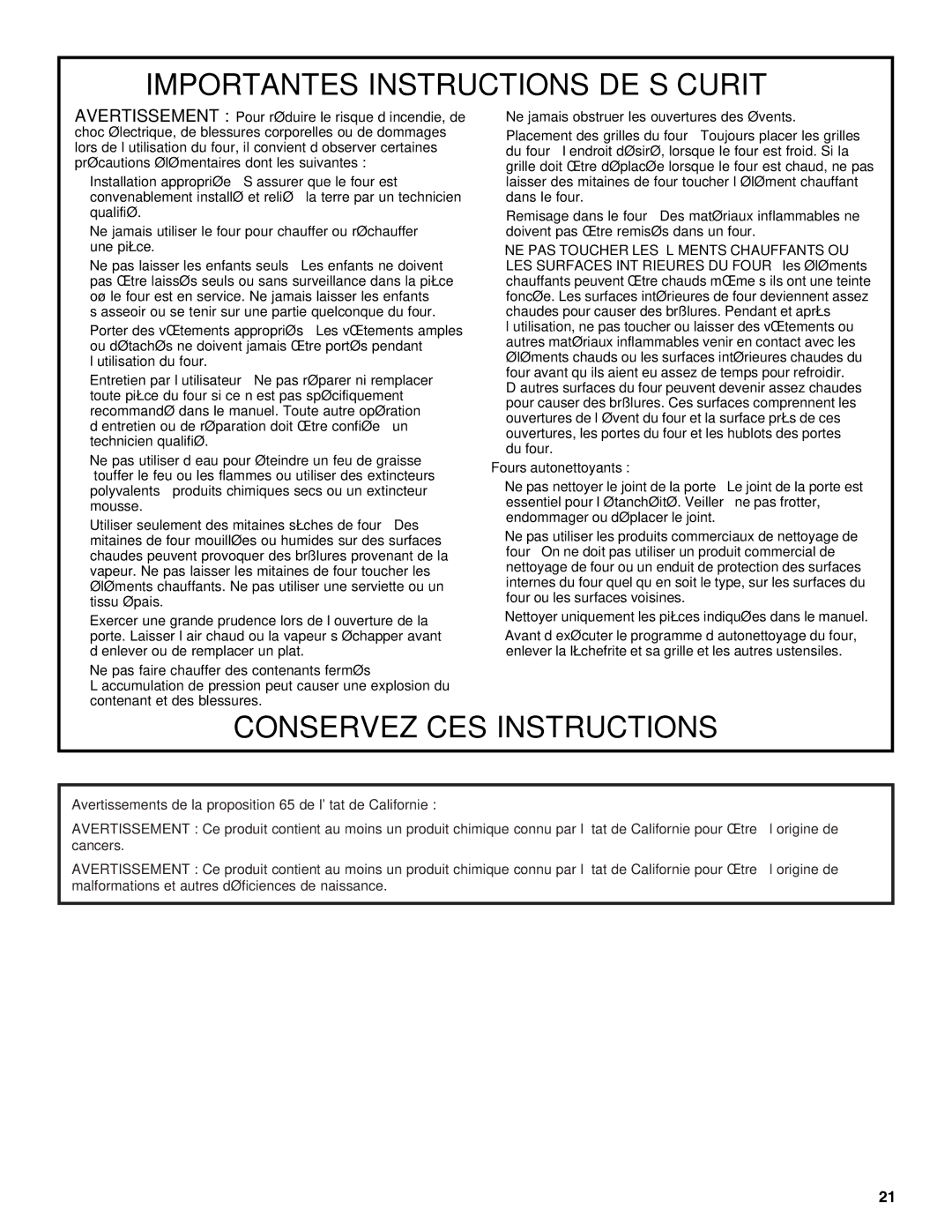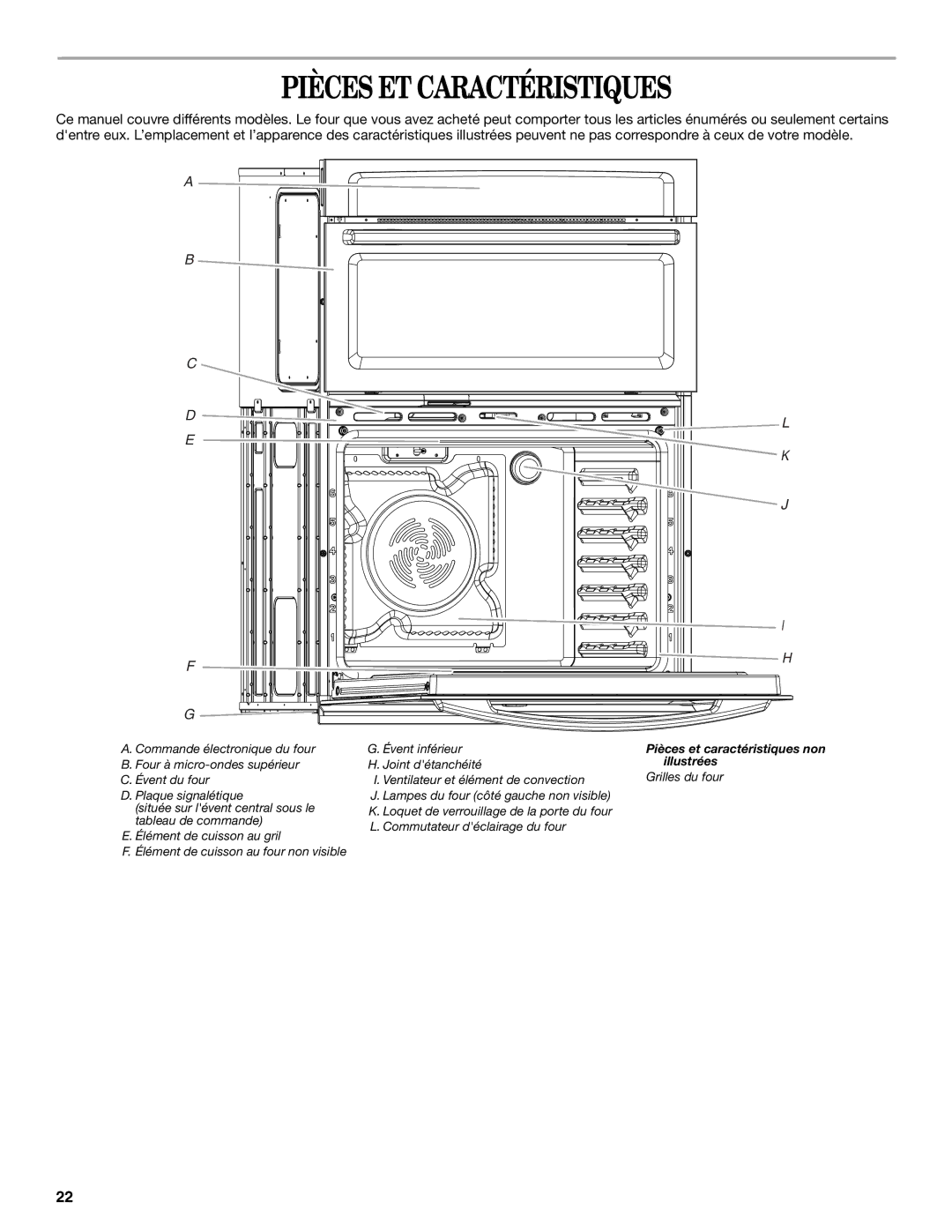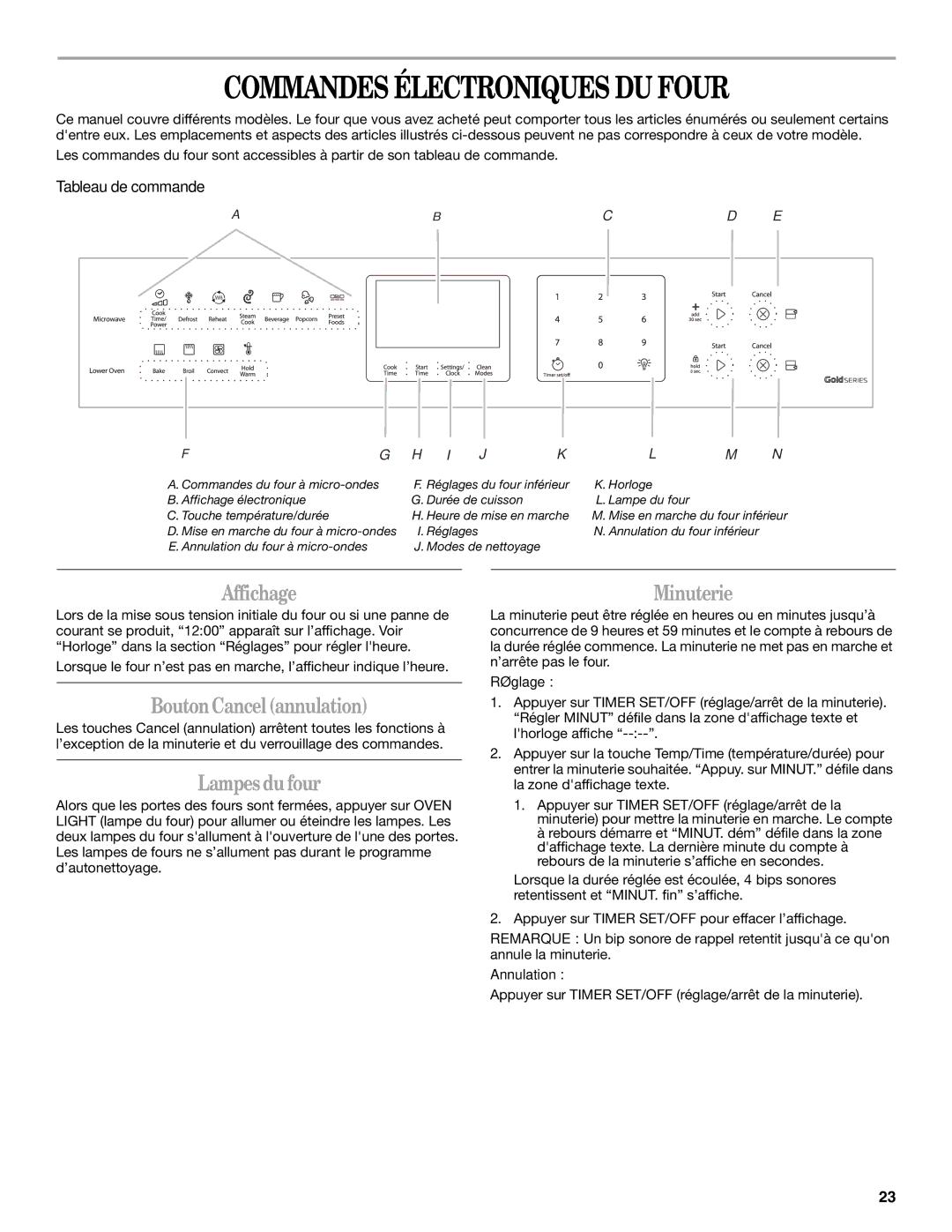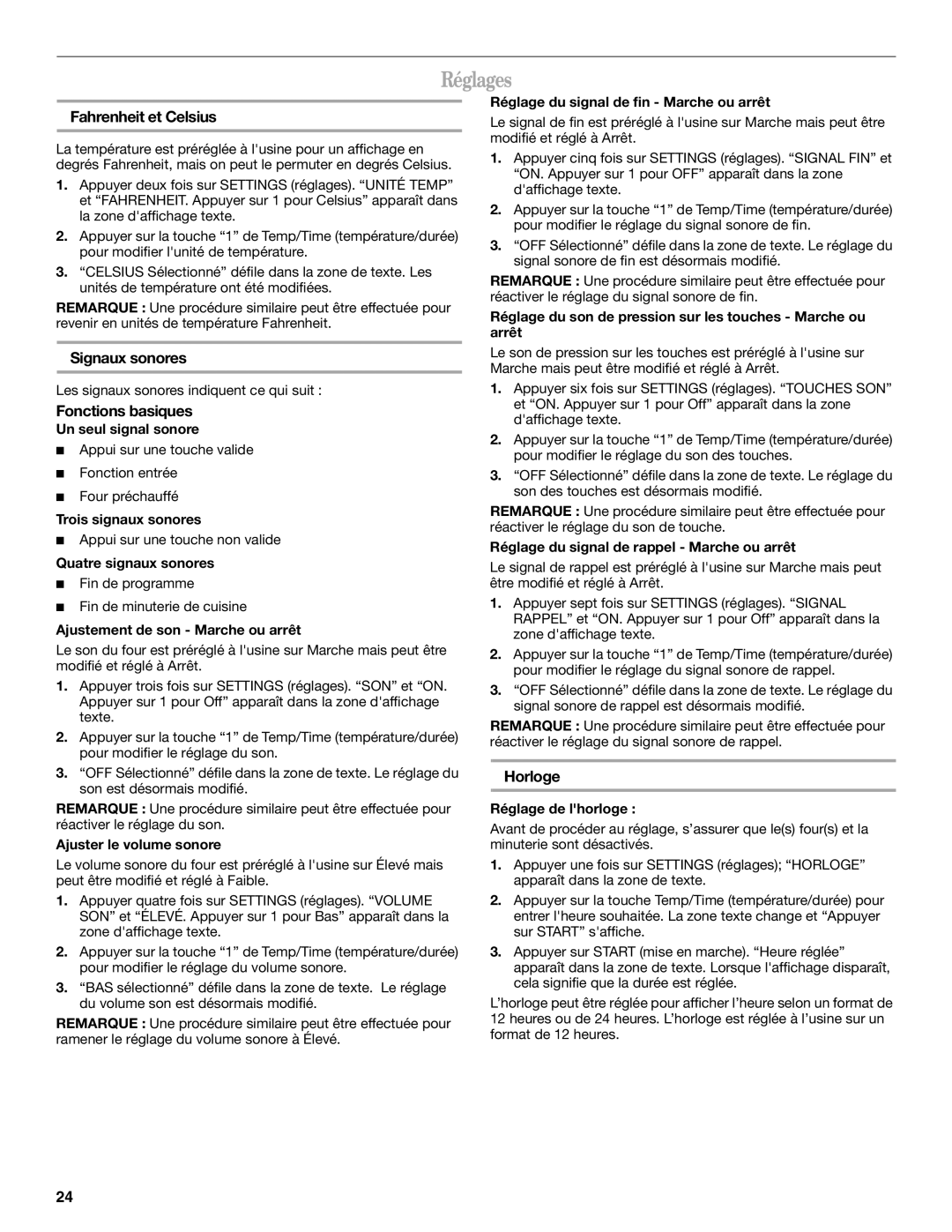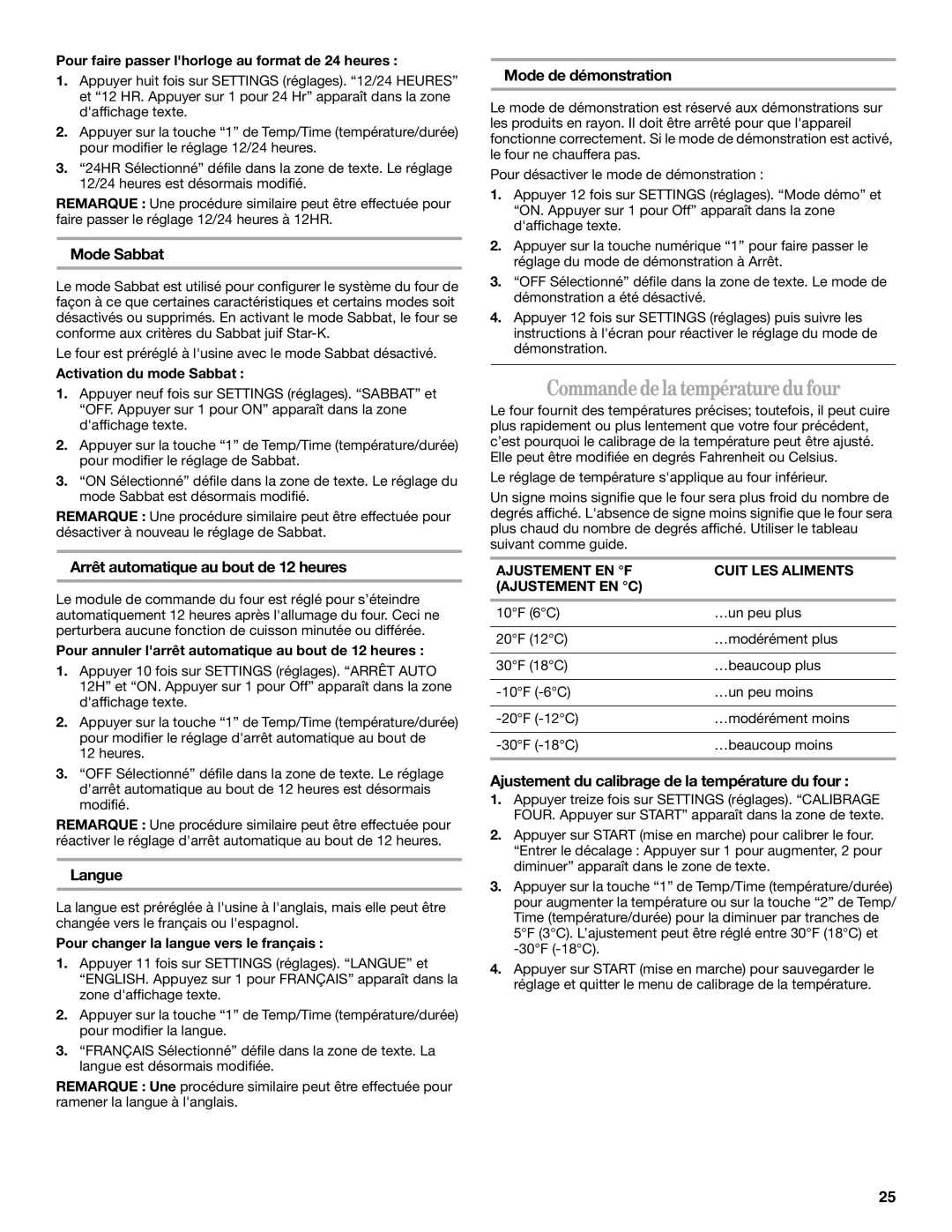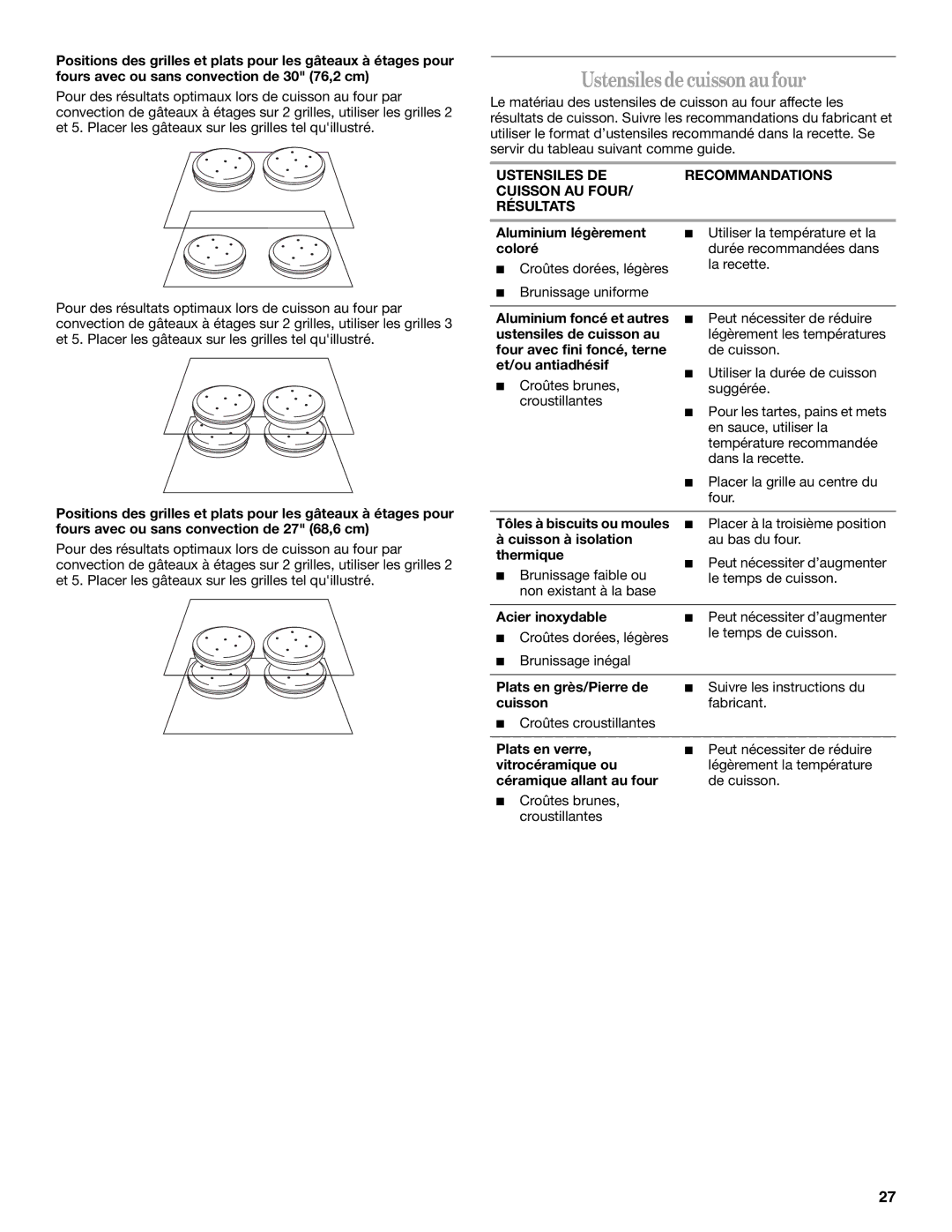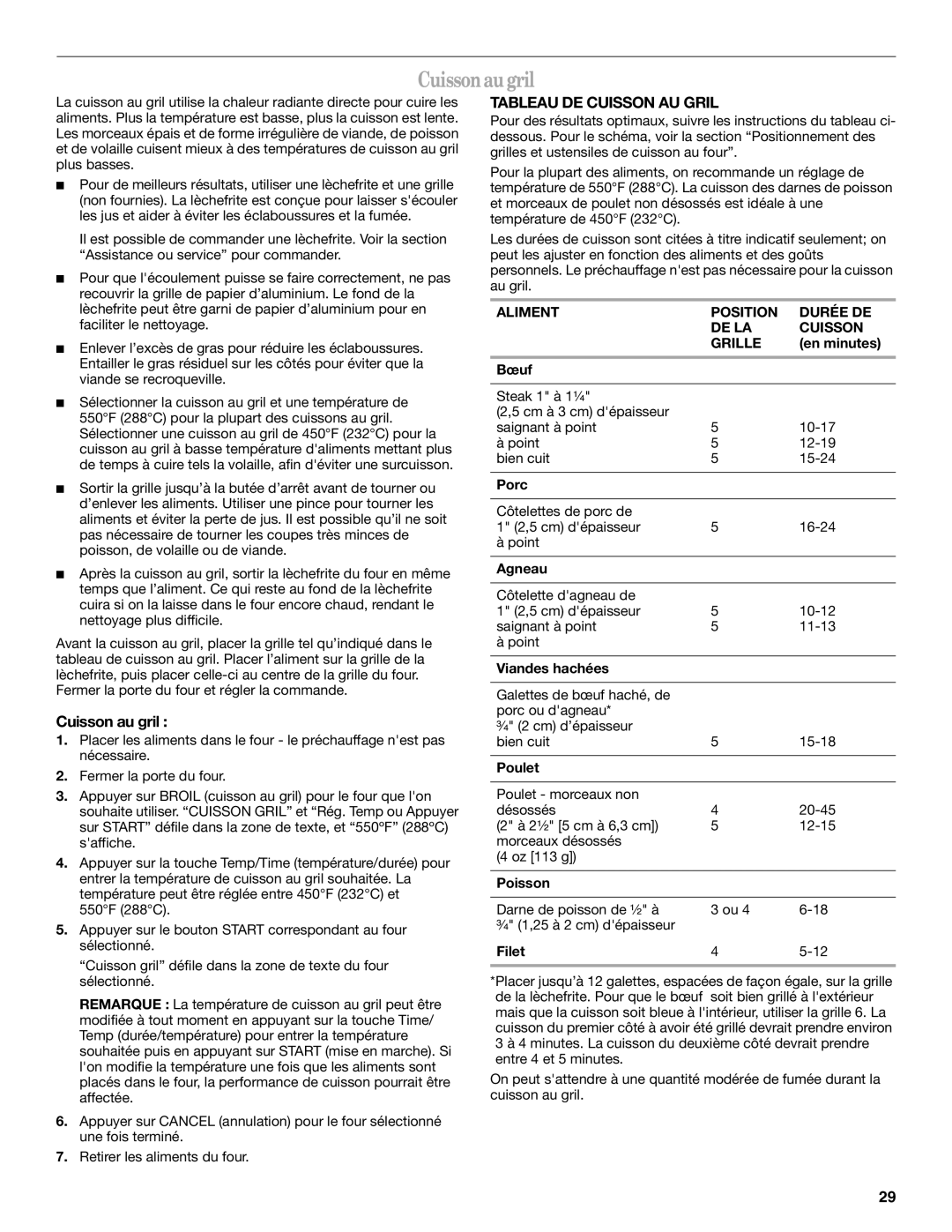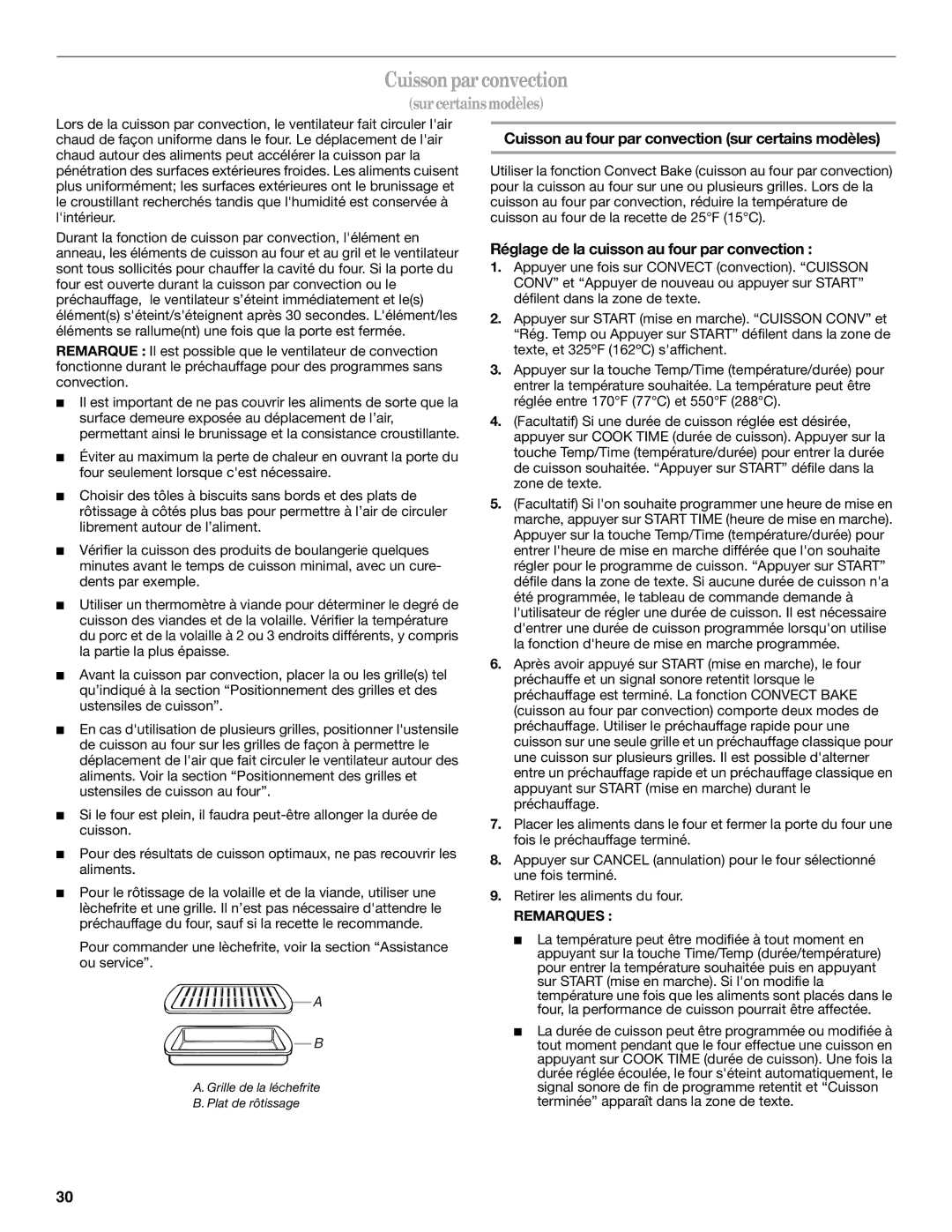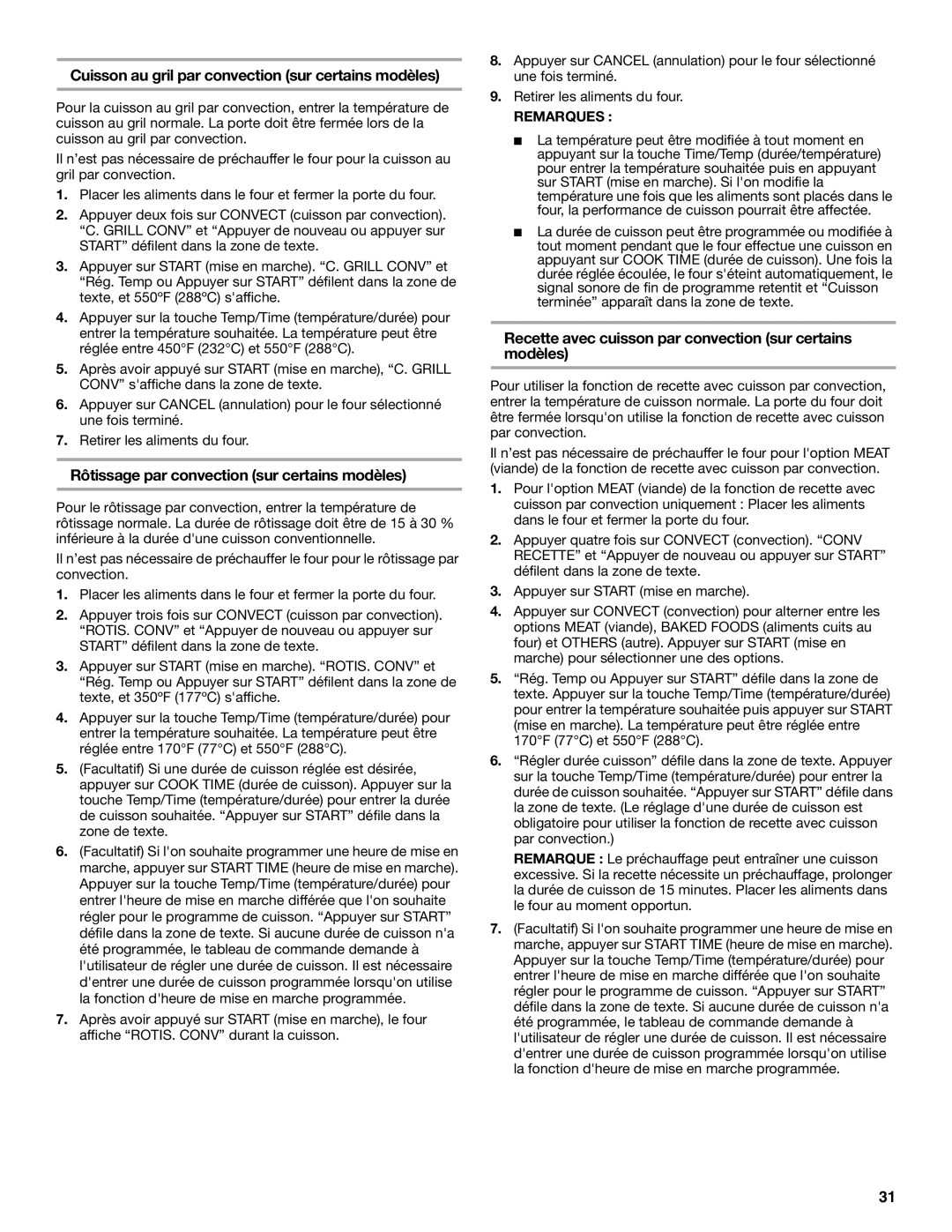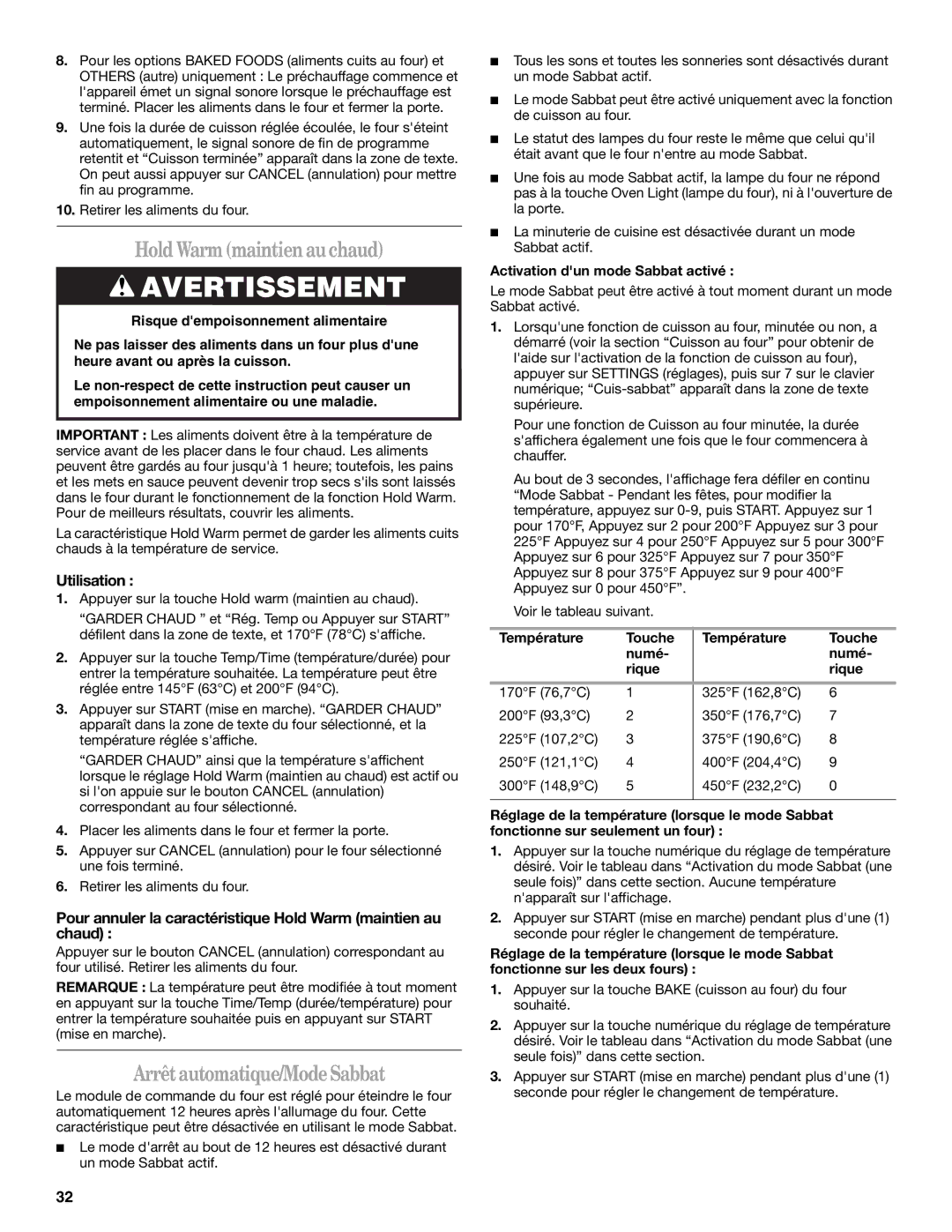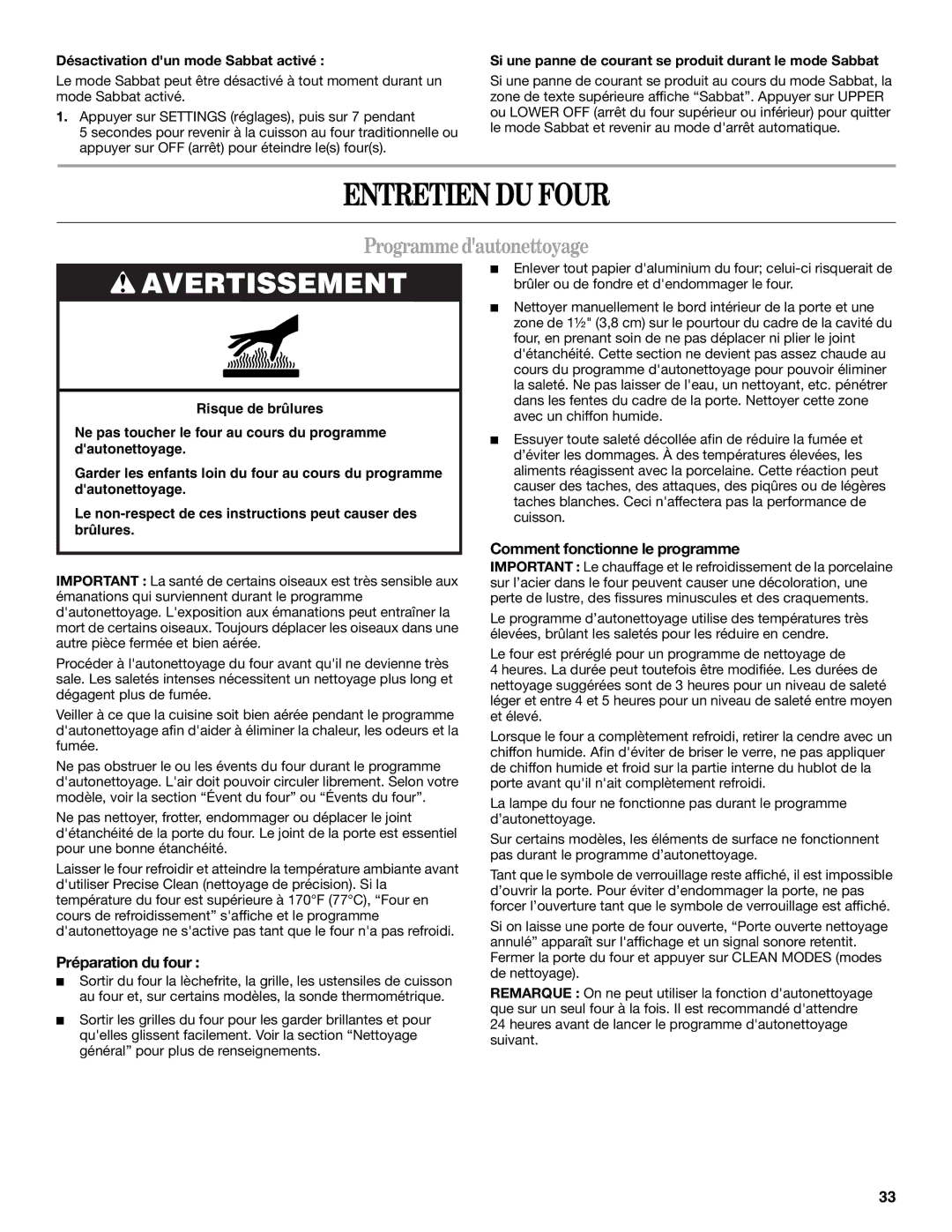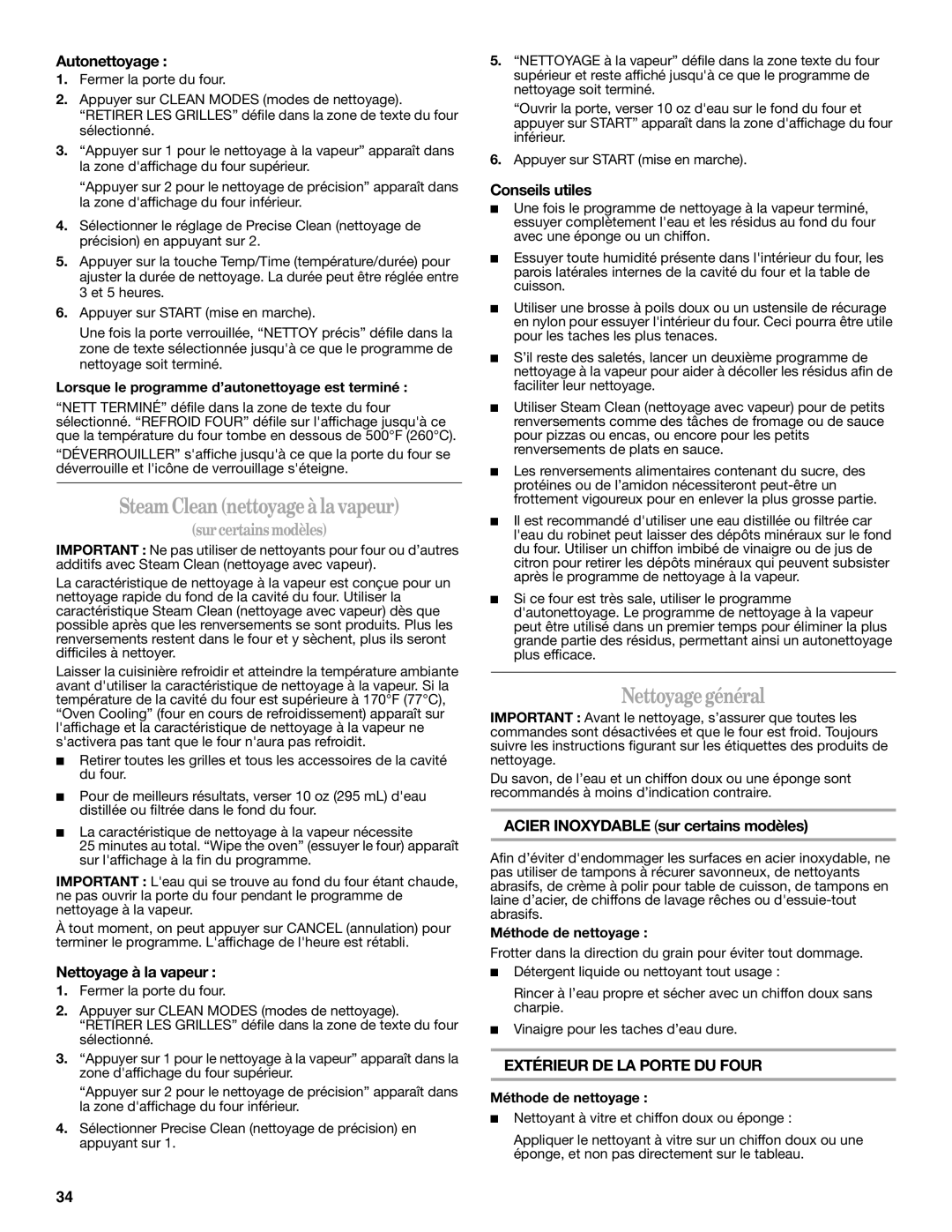
BROILING CHART
For best results, follow the chart below. For diagram, see the “Positioning Racks and Bakeware” section.
A temperature setting of 550°F (288°C) is recommended for most foods. Fish fillets and
Times are guidelines only and may need to be adjusted for individual foods and tastes. Preheat is not needed for broiling.
FOOD | Rack | COOK TIME |
| Position | (in minutes) |
|
|
|
Beef |
|
|
|
|
|
Steak 1" to 1¹⁄₄" |
|
|
(2.5 cm to 3 cm) thick |
|
|
5 | ||
medium | 5 | |
5 | ||
|
|
|
Pork |
|
|
|
|
|
Pork chops 1" (2.5 cm) thick |
|
|
medium | 5 | |
|
|
|
Lamb |
|
|
|
|
|
Lamb chop 1" (2.5 cm) thick |
|
|
5 | ||
medium | 5 | |
|
|
|
Ground Meats |
|
|
|
|
|
Ground beef, pork or lamb |
|
|
patties* |
|
|
³⁄₄" (2 cm) thick |
|
|
5 | ||
|
|
|
Chicken |
|
|
|
|
|
Chicken |
|
|
(2" to 2¹⁄₂" [5 cm to 6.3 cm]) | 4 | |
boneless pieces (4 oz [113 g]) | 5 | |
|
|
|
Fish |
|
|
|
|
|
Fish ¹ " to ³⁄₄" (1.25 to 2 cm) |
|
|
thick steak | 3 or 4 | |
Filet | 4 | |
|
|
|
*Place up to 12 patties, equally spaced, on broiler grid.
For beef to have a well seared exterior and rare interior, use rack 6. Side 1 should cook for approximately
Expect a moderate degree of smoke when broiling.
Convection Cooking
(onsomemodels)
During convection cooking, the fan provides hot air circulation throughout the oven. The movement of heated air around the food can help to speed up cooking by penetrating the cooler outer surfaces. Food cooks more evenly, browning and crisping outer surfaces while sealing moisture inside.
During the Convect function, the ring element, bake and broil elements, and the fan operate to heat the oven cavity. If the oven door is opened during convection cooking or preheating, the fan turns off immediately and the element(s) will turn off after
30 seconds. Once the door is closed, the element(s) will turn back on.
NOTE: The convection fan may run in
■It is important not to cover foods so that surface areas remain exposed to the circulating air, allowing browning and crisping.
■Keep heat loss to a minimum by opening the oven door only when necessary.
■Choose cookie sheets without sides and roasting pans with lower sides to allow air to move freely around the food.
■Test baked goods for doneness a few minutes before the minimum cooking time with a method such as using a toothpick.
■Use a meat thermometer to determine the doneness of meats and poultry. Check the temperature of pork and poultry in 2 or 3 different places, including the thickest part.
■Before convection cooking, position the rack(s) according to the “Positioning Racks and Bakeware” section.
■When using more than one rack, position bakeware/ cookware on the racks to allow movement of the fan circulated air around the food. See the “Positioning Racks and Bakeware” section.
■If the oven is full, extra cooking time may be needed.
■For optimal cooking results, do not cover food.
■When roasting poultry and meat, use a broiler pan and grid. It is not necessary to wait for the oven to preheat, unless it is recommended in the recipe.
To order a broiler pan, see the “Assistance or Service” section.
![]() A
A
B
A. Broiler grid
B. Broiler pan
11
